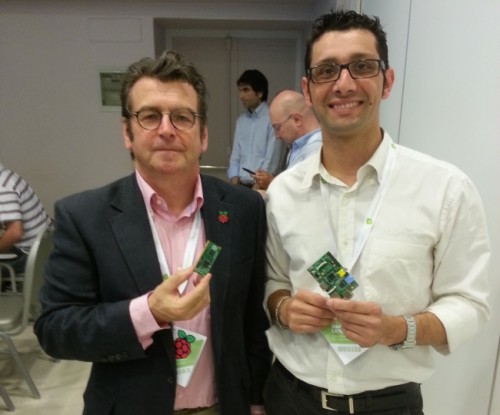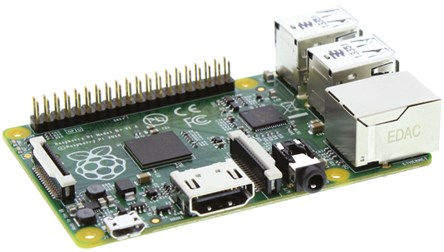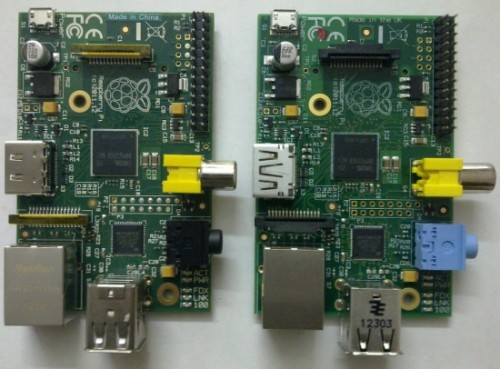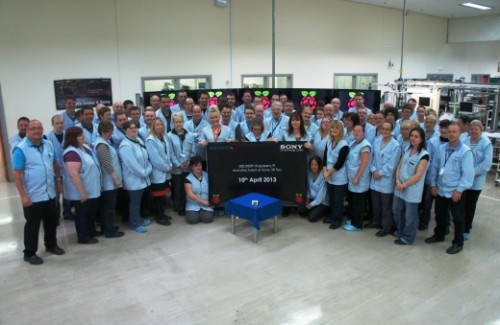- Building a 3D Digital Clock with ArduinoPosted 3 months ago
- Creating a controller for Minecraft with realistic body movements using ArduinoPosted 4 months ago
- Snowflake with ArduinoPosted 4 months ago
- Holographic Christmas TreePosted 5 months ago
- Segstick: Build Your Own Self-Balancing Vehicle in Just 2 Days with ArduinoPosted 5 months ago
- ZSWatch: An Open-Source Smartwatch Project Based on the Zephyr Operating SystemPosted 6 months ago
- What is IoT and which devices to usePosted 6 months ago
- Maker Faire Rome Unveils Thrilling “Padel Smash Future” Pavilion for Sports EnthusiastsPosted 7 months ago
- Make your curtains smartPosted 7 months ago
- Configuring an ESP8266 for Battery PowerPosted 7 months ago
Exclusive interview: Pete Lomas, co-founder of Raspberry Pi on Mission, Openness, Communities
Pete Lomas is a co-founder and trustee of the Raspberry Pi Foundation, a UK registered charity which exists to promote the study of computer science and electronics, especially at school level, and to put the fun back into learning computing. Pete has a particular interest in embedded systems and using Raspberry Pi to interface and interact with the real world.
As his day job, Pete is founder and Director of Engineering for Norcott Technologies, a UK-based electronics design and contract manufacturing company. Previously in his career he has been a lecturer in computer science at the University of Manchester (UK), and has held roles in electronic product design and development.
We recently met Pete at Better Embedded conference in Florence and suddenly got the idea to dig down more with him about Rasberry Pi today and tomorrow also getting the chance to ask Pete’s feedback on few controversial topics such as Rasberry Pi design licensing choices and Bill of Materials: Pete helped us to understand more of Rasberry Pi strategy and choices.
Enjoy this beautiful interview and don’t forget to follow Pete at @PeteLomasPi on Twitter!

Pete Lomas and Boris Landoni @Better Embedded
__________
[Simone Cicero] Pete, can you tell us more about how your Raspberry Pi adventure started?
[Pete Lomas] I met Alan (Mycroft) at a seminar at Imperial College in the early 2000s, and the conversation turned to teaching students about ‘real programming’ and the lack of this skill in the school curriculum. My background is computer engineering, and I had seen a similar issue in getting youngsters interested in electronic design from career talks I had given at local schools.
A few weeks later I met with the Eben Upton and the rest of the group in Cambridge that eventually became the other Trustees of the foundation. I offered to help to bring this project to fruition. It was clear that Raspberry Pi (although it didn’t get named until much later) was a way of potentially giving large numbers of students access to a low-cost, open computing platform; at the same time, we could embrace aspects of experimentation at the hardware level.
[SC] How is the mission of Raspberry Pi Foundation changed from the moment you guys started?
[PL] Our initial ideas were very modest: we were looking for a computing platform that could be given to undergraduates at Cambridge University before they started their undergraduate course. They could use this to develop their programming and debugging skills, something we had seen declining in undergraduate applicants over the preceding years.
We then realised that there was wider applicability and it could be used in school clubs and also in the home. In all these cases the theme is education, not through textbooks but by doing. We had always felt there is insufficient time allocated in a school curriculum to become a proficient programmer.
What we had not fully appreciated is the massive interest from the maker space and how quickly a community of savvy makers, programmers and engineers would massively enhance the value of the Foundation’s work. We are constantly amazed at the ways in which Raspberry Pi is used and the released of model B+ and the compute module provides a basis for even more brilliant stuff.
[SC] One particular curiosity that our community is asking is about how did you come up with the final pricing of the Pi?
[PL] The pricing of Raspberry Pi was set very early on. Essentially it had to be cheap enough to risk breaking. Many of the projects with Raspberry Pi involve some sort of interfacing and we wanted the maximum number of people to have a go. The worst (which fortunately only seems to happen very rarely) is that you have to replace your Raspberry Pi.
The use of a SD card was also important, as you could reset the software state of your Raspberry Pi completely just by re-imaging the card.
[SC] Would you also tell us what do you think that is making Raspberry Pi such unique and pervasive in the makers community? In the end a lot of development boards project exists: is the community building work that makes you different? Is the quality of the technology? The ubiquity of linux platform and you focused work on making firmwares more and more efficient?
[PL] In large part it has been four factors:
- The functionality it provides for the price point which is very attractive to makers;
- The support that the community has given Raspberry Pi as a charitable project as they share our goals in supporting the upcoming generations of makers, programmers, engineers.
- People have also seen that any upgrades to the software systems have been compatible across the first and last generation Raspberry Pis and that even with a significant upgrade in B+ we have tried to maintain as much commonality and compatibility as possible.
- Finally I think the co-ordination efforts of Liz and the website moderators in maintaining a vibrant online community, and making our website the “go to” place for exciting Raspberry Pi based projects and conversation.
[SC] Are you considering moving more clearly into Open Source Hardware? What is your experience with the Compute Module? You announced it as an open-source project (even if in the end the licensing of the schematics is still not OSHWA approved – as it’s not explicit): did you see people experimenting with the design files you released?
[PL] Our general approach to open source hardware has been to look primarily at the requirements of our educational mission and make sure that they are satisfied. Our agreements with our licence holders quite reasonably mean that we have to protect their investment in production of the Raspberry Pi.
With this educational remit, keeping to a common platform has significant advantages. We are creating a considerable amount of teaching resources, and we must be sure that these will run on the platform without the requiring the user to subtly re-configure before it would work.
Generally everything you need to create with Raspberry Pi is available under some form of open access or model. All our educational material is provided under creative commons. A significant milestone was to unlock documentation on the Videocore GPU, which has allowed users significantly more access to the underlying platform.
[SC] Is there a point on making more information available, embrace true – open hardware licenses at least for the part of the products that you control – and in general in giving other manufacturers and DIY enthusiast the possibility to manufacture RaspberryPI themselves in a way that is similar to what happens with other boards (for example looking into SOCs that are a bit more easy to source)? Is it something that you guys are considering or your concern is more to offer a unique, controlled platform to encourage software hacking and creativity?
[PL] We are well aware that the choice of SOC has restricted the ability to make direct clones of the Raspberry Pi, but creation of variants and clones, whilst interesting, does not really help our mission or provide any significant creative advantage. Most of our creative users take advantage of the low price point and the wealth of support in the community to create really great projects.
From a maker viewpoint there are a considerable number of other options if you wanted to have a fully extensible open source platform. Regrettably for the same performance, the price will almost always be higher. Volume manufacture of two compatible platforms, for us, was the way to go. This has now enabled us to offer a significantly upgraded B+ at the same price point.
[SC] How is you compute Module changing the way people is using RaspberryPI technology? is it getting more into business applications?
[PL] We have recognised that for some people, the creative activity is just a stepping stone to a larger journey to becoming a business. As the BCM2835 is not available in general electronics distribution channels, the Compute Module provides a route to take an idea and concept based on Raspberry Pi and refine it into a specific product. The PoP (Package on Package) technology is very much a high volume manufacturing process, so it limits the number of contract manufacturers that you could use. Building prototypes on the bench would be extremely challenging. Creating and using a relatively simple carrier board is very attractive for initial manufacture keeping costs and risk low.
This also brings the interesting possibility of computing clusters based on Compute Modules.
[SC] In general, in what direction you see the next development of the RaspberryPI product ecosystem – if there’s one in the plans?
Do you guys plan to make stronger, more powerful boards – as the ones that many cloners are doing? Can you tell us more of the Raspberry Pi Model B+ you just launched?
[PL] As you will have seen over the last few releases we do not discuss our product development plans until we have something ready to ship. On the launch of the B+ we did announce that there will be a Model A+ that will launch in a few months time. This is what we did with the A and B but due to demand that outstripped our production capacity we initially focused on model B then rolled out the A, although this time the delay should be much shorter.
As for stronger more powerful boards: many people have commented with some surprise that we did not upgrade the SOC with this release. Our decision was to tidy up and expand the existing product. We have taken user input, and also looked at the pinch points that impede creative use both in and out of the classroom. So the key refinements are: two additional USB ports with power control to stop re-boot events; switch mode power supplies to reduce consumption by around 30%; additional I/O to access more SoC features whilst retaining compatibility; and a general tidy up of the interfaces and their positions with the much-requested mounting holes!
As you know we have invested significant resources in squeezing performance out of the current design and the impending release of Wayland will give the whole graphics system a considerable boost. So at the moment we have plenty of scope to improve what we are currently doing.
An additional feature in development is support for Raspberry Pi HATs. This is a software system that uses a small serial memory on HAT compatible I/O cards that will provide board identification and automatic configuration of the software. This plug and play like feature will greatly ease the used of multiple card types in the classroom so that the kids can focus on their creative projects.
[SC] As your platform has a huge reach and potential footprint, are you guys considering the possibility to switch towards a more sustainable product design and manufacturing? The most interesting trends so far all go into modularity and fairness (Fairphone project is a good example, but we could also think to Project Ara by Google). Are you guys interested in this topics?
[PL] Currently the Raspberry Pi is built by Sony in Pencoed in the UK. We are very satisfied with their continuous efforts to avoid the use of conflict materials and our distributors are very well versed in their responsibilities for recycling electronic waste.
The phone industry is of course completely different, they are focused on a user replacement cycle of 12-18 months or even less. We have no imperative to operate in this way and we always try not to disenfranchise our early adopters.
The current designs are modular at a system level as users add I/O boards and devices to suit their exact needs. Upgradability (to save disposal of whole units) has really been achieved by maintaining the usefulness of even the earliest models released.
[SC] Can you give us some examples of RaspberryPI use cases that you consider particularly breakthrough, projects that you feel to endorse?
[PL] Looking through our blog on the website you will find hundreds of projects, some very simple others incredibly complex. I really don’t want to single out one or two as I feel they are all brilliant in their own way. The important thing in all of them is the application of curiosity, inventiveness and a desire to learn.



















Pingback: Interview with Pete Lomas, co-founder and trustee at the Raspberry Pi Foundation | Raspberry Pi Pod